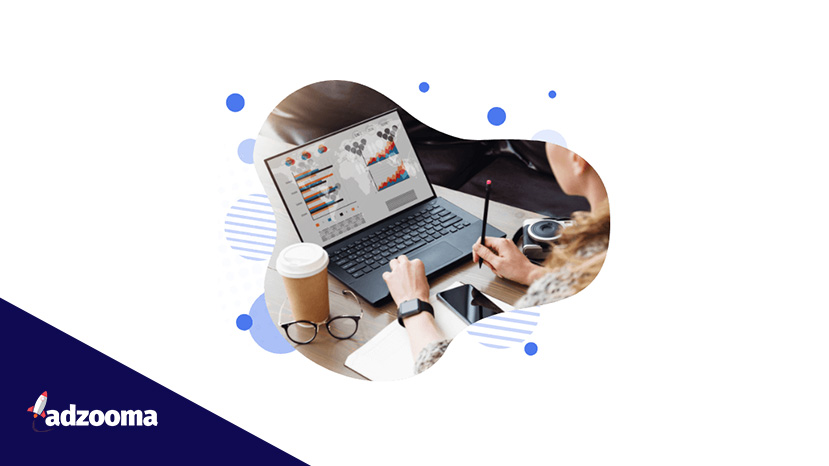Claiming that automation is the future of PPC (Pay Per Click) advertising is a bold statement to make.
But it’s one that we’re prepared to back up.
Why? Because automation is a type of AI (artificial intelligence) that is designed to make your job and achieving your goals so much easier. It saves you time, helps you crunch the numbers and deliver a better ROI (return on investment).
Essentially, automation uses data and computer wizardry to remove tedious manual processes. So, you have more time to focus on the more important parts of your business.
If you want to take your campaigns to the next level, automation is the tool you can’t do without. Here’s how automation can help your business – and why it’s the future of PPC.
Automation doesn’t mean your job is under threat
Sometimes the mere mention of automation or AI is enough for people to start panicking about their job safety.
And it’s definitely not helped by headlines like these:
- ‘Automation threatening 25% of jobs in the US‘
- ‘Automation could destroy millions of jobs‘
- ‘Technology has already taken over 90% of the jobs humans used to do‘
The fear is there. It’s real. And I’d be lying if I said it didn’t impact some industries more than others.
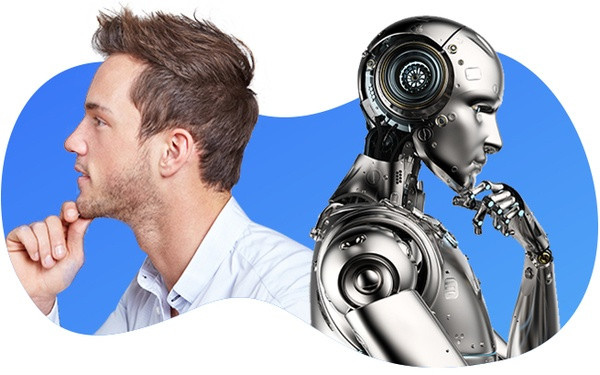
But it’s not all doom and gloom.
Advancements in technology and machine learning means more opportunity, not less. It helps free up your time, giving you the room to grow and achieve more than you could before.
Just take a look at how things have changed over the past 10 years. There are plenty of jobs that just didn’t exist back then – like podcast creators, YouTube videographers, app developers, drone operators… the list goes on.
So don’t fear change. Embrace it. Take advantage of it – and how it can make PPC management and services a whole lot easier.
Rise of the robots – automation in action
Automation and AI isn’t a new concept. It’s something that a lot of companies have already taken on board and implemented to revolutionise and streamline their business.
Take a look at Amazon. They’re not afraid of technology. In 2017, they spent $22.6 billion on research and development and discovering new ways to take their business forward.
A great example of this is their recommendation engine.

It uses data from your purchase history and browsing history to create a list of products recommended just for you. You’ll see these on the homepage, your recommendations page, underneath a product you’re currently looking at or even emailed out to you.
This process is completely automated.
No single human looks at your activity and then handpicks the products for you. It’s done in seconds and creates 35% of Amazon’s revenue.
A CineMatch made in heaven
When it comes to automation and AI, Netflix is another great example because they don’t just use it to make their platform better, they also use it to gather data.
For those that are unfamiliar, CineMatch is the name of Netflix’s algorithm that determines which titles are shown to the user. It uses information like:
- Their viewing or scrolling history
- What titles similar uses are watching
- A tagging system that groups closely related titles together
This makes people more likely to find titles they’re interested in, keep watching and keep paying their subscription.

It’s a great system. But CineMatch doesn’t just gather data on what people watch.
It finds out how people watch their shows. It knows how long people watch for, when they pause or replay bits. Whether they binge an entire series or watch an episode at a time.
They obtain information – and use it to improve their service.
One of the most famous examples is how they commissioned their first original series, House of Cards.
Normally, TV shows are commissioned in stages and involve creating a pilot script and episode. If it goes well, they’ll order the first series. Then it’s down to the ratings and reviews to see if it will be renewed.
But Netflix purchased House Of Cards for two entire seasons at $100 million – without seeing a single scene.
Why? Because their data told them their audience would like it. It told them people liked political thrillers. That people liked David Fincher’s style of storytelling. That people were fans of Kevin Spacey (this example did not age well).
And in this Venn diagram of interests sat House Of Cards.
But they didn’t just use the data to commission the show. They also used it to influence how they advertised it to their users.
People who watched a lot of Kevin Spacey films saw trailers that put the actor front and centre. Those that watched female-led films like Thelma and Louise saw trailers that focused more on the women in the show.
And it worked. Netflix is now a powerhouse of television – thanks to AI and automation.
Turn your data into something meaningful
Netflix uses data to improve their business. But when it comes to PPC management services, this process is a lot easier than spending $100 million on a new product.
PPC marketing is rife with data and that’s how the best management companies get the best results.
You’ve got the exact stats on how many people have seen your advert, who’s clicked, who’s converted and how much it’s costing you. This data allows you to see what is working for your company – and what is underperforming.
Which means you can use this information to ensure that your campaigns are performing even better than ever.
After all, you’re never going to stick with your first draft. Even if you’re seeing good results, there’s always a way that you can be better and improve the ROI for your PPC advertising campaigns.
But this is a very manual and time-consuming process.
It involves trawling through your data, looking at how each campaign and ad is performing then deciding which changes to test that might improve your performance.
We’ve been there.
As a small agency, we were absolutely sick to death of wasting hours trying to perfect our PPC advertising. We knew there had to be a better way with tools that would solve our problems without surrendering control to a PPC management company.
Automation was the answer.
That’s why we built Adzooma. And at its heart lies the Opportunity Engine. This is a smart piece of automation software that intelligently analyses your accounts, and uses the data to provide specific opportunities to increase your performance.
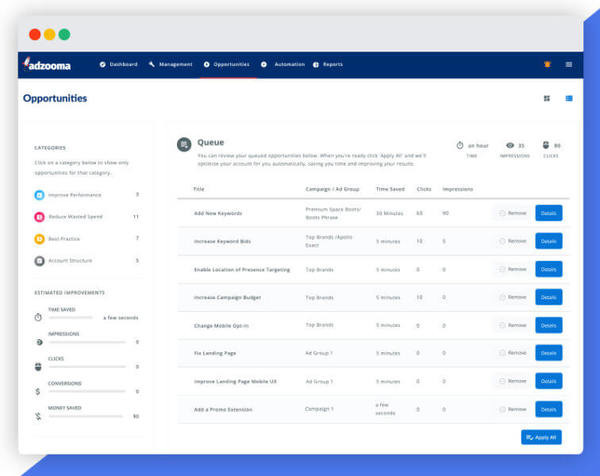
Our PPC software automates everything for you. But don’t worry, you still retain complete control of what you apply to your account.
Or, add them to the queue and click apply all. That’s it. All of them will be actioned in one go.
It takes seconds.
Want to see what kind of opportunities that are waiting for you? Try it free.
Target the right audience with automation
When it comes to PPC marketing, there’s a golden rule that you need to follow to see success.
It’s pretty obvious as to why. They’re the ones who are going to your product and care about your company.
Let’s say you own a beauty salon and want to run a PPC advertising campaign promoting your eyebrow microblading service.
The audience for this is predominantly female customers under 30 in the local area who are interested in beauty and fashion.
The problem?
You’re targeting the wrong audience and now Jeff is seeing your adverts. Jeff is a 52-year-old accountant who plays the saxophone in a jazz band on weekends. He’s never heard the term ‘on fleek brows‘ before in his entire life.
Jeff is not going to have his eyebrows microbladed.
For your PPC advertising campaigns to bring in customers, you need to target the right audience.
Building your audience list takes a lot of data and research. It’s time-consuming. But automation can come in and speed up this process.
Platforms like TruAudience can automate the whole process. But you don’t need specialist PPC software to build a list. There are also tools within the advertising platforms themselves that automate some of the hard work for you.
Take Facebook’s lookalike audiences for example.
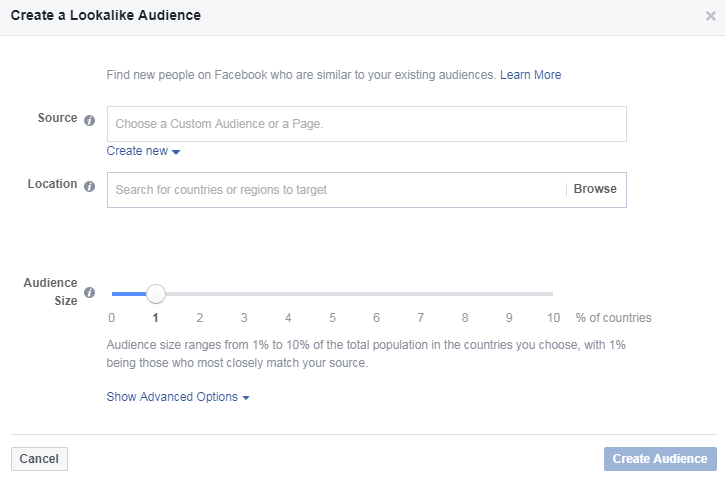
This is a great way to expand and build out your audience, based on the existing lists and previous successes you have. They work on a scale of 1%-10%, with 1% being a narrower audience that more closely resembles your audiences and 10% being larger and a little more varied.
Think of it as friends of friends. 1% helps you get your audiences closest friends that share the same interests. 10% goes a little further afield, targeting those that they have less in common with and don’t really speak to as often.
This process is completely automated. You’re not manually building this list. It’s done for you, saving you a lot of time and money while extending the reach of your PPC campaign.
Automate your Google Ads budget with Smart Bidding
Smart Bidding is Google’s solution to help users reach their goals faster than before.
If you’re new to Smart Bidding, it’s a way of using your account data to set budgets and automatically optimise your campaigns to achieve the best results. Currently, there are four key strategies associated with Smart Bidding:
- Target CPA (Cost Per Acquisition). This strategy aims to get you the most conversions possible that cost below the CPA that you set
- Target ROAS (Return On Ad Spend). This strategy aims to improve your ROAS for your entire campaign with cost-effective conversions
- Maximise Conversions. This strategy aims to get you as many conversions as possible within your budget
- Enhanced CPC (Cost Per Click). This strategy adjusts your CPC bids depending on the type of click you’re likely to get. If a user is more likely to convert on your website, your CPC bid is raised to give you the best chance of getting that click
With nearly 70% of advertisers taking advantage of Smart Bidding, this is something that Google is only going to improve.
In fact, this year alone, they’ve already pushed a big update to Smart Bidding with campaign level conversions. This allows you to track and optimise your campaigns for specific conversions for more accurate and precise data. It’s a pretty neat update and well worth a read if you’ve got the time.
There’s just one problem with Smart Bidding. It needs data.
Google currently recommends that you need at least 30 conversions a month to use Smart Bidding. If you don’t hit this minimum, their algorithm won’t have enough to work with.
It will be like trying to paint in a pitch-black room. There’s no way to see what you’re working towards.
Data lights the path for Google’s algorithms. The more data you feed in, the more you can get out.
But if you’re just starting out, this may not be one that you can automate for a while. Stick to manual bidding until you’ve got enough insights to better optimise your budget.
Generate reports in minutes
Before we get started on this section, ask yourself: what are the most time-consuming tasks on your to-do list? We’re willing to bet that PPC reporting is pretty high on that list.
It’s a pain. You have to trawl through endless data and find out what is actually meaningful. Then, slowly transfer this chaos of numbers into some kind of report that other human beings would understand. Yawn.
Or you could use automation to do all this hard work for you.
And this is fundamentally what automation is for. To make your job easier and get rid of the jobs that drain too much of your resources. To free up your time and let you use it on better things.
It’s why adding custom white label reports was an important build for us at Adzooma.
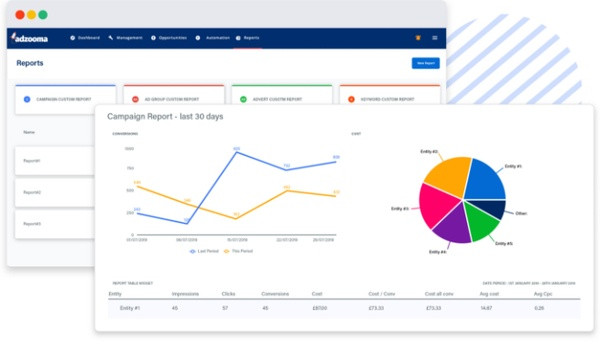
And, you’ll excuse us for blowing our own trumpet here but it’s something we’re proud of.
Our platform makes quick and easy work out of reporting. Simply drag and drop the elements and data you want to include, add your own logo and boom. It’s ready for you to send straight to your clients and bosses.
Even better – when you’ve finished a report, save it as a template. So, whenever it’s time to renew your reports, all you have to do is click and your latest data will be automatically updated for you.
Tempted? Read more about our reporting feature and sign up for free today.
Set rules and remove tedious work from your week
Automated rules are the sweet spot of PPC marketing.
It’s like having your own PPC management service to delegate your tedious workload to. It’s a time-saving lifesaver. If we could get something to also automate the tea-making process, we’d be an unstoppable machine.
Automated rules make changes for you when a certain event happens.
For example, if your CPC (cost per click) goes above a certain amount, you can pause your campaign. Or, if your CPA (cost per acquisition) is lowered, you could up your budget to make the most of the opportunity.
It’s a feature that we’ve worked hard on for our own platform.
Whatever you need, just create a rule in our automation tab. Then, you can sit back and let it do it’s magic. These rules will also run every 30 minutes, meaning you have a free PPC assistant on hand to do your work every hour of the day.
It’s one of the ways we’ve helped our clients save 90% of their time managing their PPC advertising.
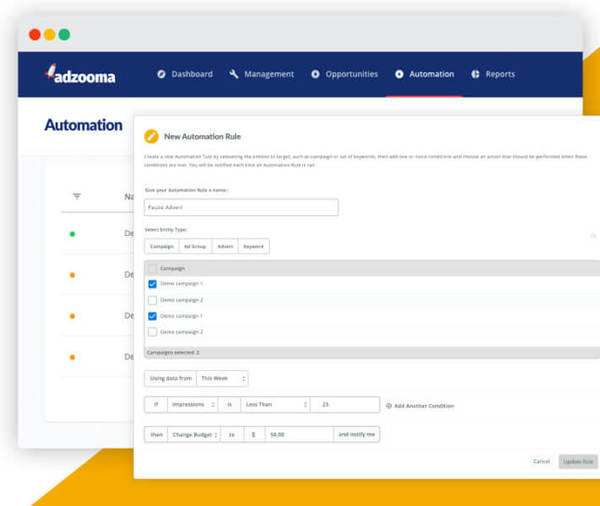
But that’s not all.
If you want to remain in control, you can also set up custom alerts with Adzooma.
So whenever something important happens, like a change in spend, clicks, conversions, impressions…etc, etc, you’ll know about it. No matter what it is, we’ve got your back, as your 24/7 automated assistant.
It’s the only PPC software you’ll ever need.
Not signed up to Adzooma yet?
With a full automation suite, 24/7 account monitoring, one-click improvements, intelligent reporting, and so much more, Adzooma is the smarter and easier way to manage your Google, Microsoft and Facebook ads.
Best of all? It’s completely free!
Use automation across your wider strategy
By this point in the article, you’re starting to understand just how useful automation can be in perfecting your PPC advertising.
But it goes further than that.
Because PPC isn’t a standalone advertising model. It’s part of a wider marketing strategy. It only makes sense that automation can help simplify other parts of your marketing as well.
And once you see how much automation can be used across multi-channels, you’ll see that automation is the future of marketing as a whole. And that’s why management agencies need to keep up.
This could be any number of things, including automating your email marketing with SendFox, utilising CRM software with Hubspot CRM or even automating your social media scheduling with platforms like Crowdfire and PromoRepublic.
It just involves looking at your jobs and identifying what is slowing you down. Then, researching if there’s a way to speed up and automate the process.
Don’t get us wrong, there’ll be some things that you just can’t automate. But that’s natural. After all, automation isn’t here to replace jobs, but contribute to your wider strategy.
These are machine learning platforms that are designed to automate the copy and content that you produce.
The result? Content generators were good at creating ideas for topics and creatives. But when it came down to the actual writing, they weren’t quite there yet. They were clunky, didn’t make sense and didn’t work towards a goal.
And that went against the golden rule of marketing. If your material isn’t working towards a goal, it’s pointless.
Automation just continues to improve as the years go by.
Take chatbots for example. When they first came out, they were cumbersome. If you didn’t respond to them in a certain way, they’d send you a generic response that was annoying, frustrating and a waste of your time.
And, let’s face it, there were some creepy robot responses there too.
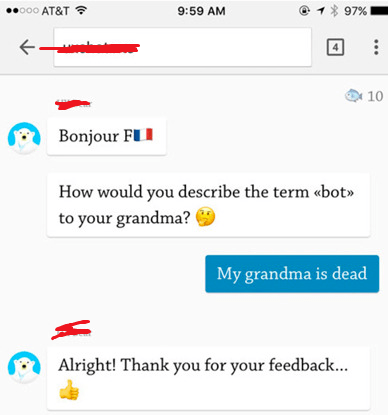
But the technology has come on leaps and bounds since then. Chatbots these days provide a wealth of benefits for your business. They’re a way to respond to users instantly, so they don’t feel like they have to wait hours for support.
If they receive relatively simple requests, it can instantly give your customers the information they need. This might include things like:
- “What’s your store address?”
- “How much does this dress cost?”
- “Can I check the status of my delivery?”
Which frees up your team to reply to the requests that need more time and attention and helps ensure that your sales reps don’t miss a lead.
The best thing? It’s just going to get even smarter.
Streamlining your onboarding process
Talking of the wider strategy, let’s look at what happens if things go well with your PPC advertising.
Customers have taken to your website, been convinced its the right thing for them and are ready to buy.
But that’s not always the last step – particularly if you provide software. You need to make sure that your customers are satisfied with your services and not cancel after a week.
And when you consider that it’s 6 times more expensive to acquire new customers, it makes it doubly important to retain their custom.
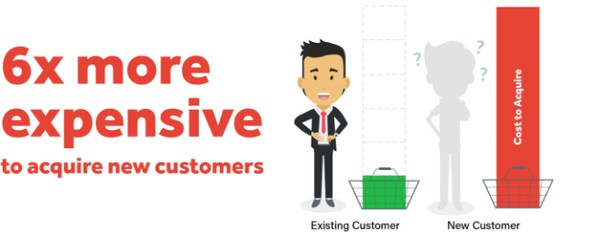
One of the ways is by improving your onboarding. For those that are new to onboarding, this is the process where you sign up new clients to your product or service.
It’s summed up pretty great in this article from Intercom:
“The goal of onboarding isn’t to show new users where features are. Instead, it’s to guide users towards their “aha” moment, the moment of delight where the value of your product becomes immediately clear.”
Here’s some truth for you. Even the simplest programs will need some explanation.
I think a great example of this is at a recent family event. One of my relatives was showing me a nice photo she had just took of me and my niece playing in the garden.
I asked her to send it to me, thinking that was enough. After all, she has a mobile phone, she knows how to use it, why would I need to explain is such a basic task?
But then she asked me what my email address was. For a moment, I was confused. Why would she need my email address to send me a picture? She has my number, she could have just sent it to me on WhatsApp.
But instead of saying that, I stopped and thought it through. She was probably asking me that question because she didn’t know how to do it any other way. So, I showed her how.
“Oh!” she said, “I never knew that, thanks for telling me!”.
She wasn’t mad at me or thought that I patronised her. She was genuinely grateful that I had shown her something she didn’t know before.
Now, when it comes to signing up clients to your project you can’t have a member of staff run through how it works. Especially if you want to grow your business. It’s unsustainable.
This is where automation comes in.
With tools like product tours, you can ensure that everyone gets a guided look around your product when they sign up. So, they know how to use it and get the most from it, without your staff having to dedicate their time to personally guiding your clients through each step.
Win-win.
Yet, automating your onboarding process still faces a lot of objections. One I hear commonly is this:
“Some people will hate feeling patronised by tutorials for something they already know!”.
Yeah, there’ll be some people who will know it all. Some who are completely fine figuring it all out. But they’re not going to stop using your service because you’re giving them too much information. That’s absurd.
The most likely scenario? They’ll skip it.
Even if 80% of your users don’t use it, having one is worth it for the 20% who need it.
Thanks to your onboarding automation, this 20% will feel more confident and able to use your product. Who will have a better first impression and who are then more likely to stick around for the long-run.
It’s well worth the investment – and something that we’re very hard on improving for Adzooma.
Automation can’t solve all your PPC problems
Automation is great. It’s brilliant at saving time and making your life easier.
But it’s not a magic wand that does everything for you.
You don’t just press buttons at random and hit Go. It’s a little more complicated than that.
PPC advertising requires a strategy. Some knowledge and understanding of what you actually want to achieve. It needs to be tested and have the data to make better changes for your future campaigns.
Because at the end of the day, PPC isn’t free.
Don’t get us wrong, PPC and its management can be incredibly cost-effective. If done right, you can make more money back than what you put in. In fact, according to Google, businesses can double their profits and make $2 for every $1 spent on Google Ads.
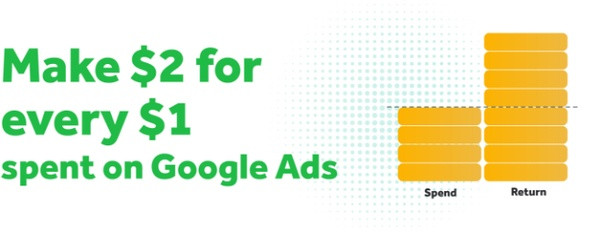
While on Microsoft you can lower your CTR 30-50%, increasing your ROAS (Return On Ad Spend) by a phenomenal amount.
Not advertising on Microsoft yet? You can get $125 in free ad spend when you spend $25, thanks to our exclusive offer.
Then connect your account to Adzooma for free and manage both your Google and Microsoft campaigns from one screen.
But you’re still paying for every click you get. Which means you need to make sure that they are the right ones and you’re not throwing money away on the wrong people.
Automation can do this for you. But it means nothing without an actual strategy and goal in place.
Get that nailed first. Then find the PPC software you need to make it happen.
Win big with automation
Automation in PPC marketing is revolutionising the way that companies do business and manage their campaigns.
How? By removing draining tasks that take up too much time and attention. By providing more streamlined and quicker ways to achieve a goal. To transform your data into hard strategies and actions that are designed to improve the performance of your campaigns.
The result is more time and resources that you can use to feed back into your company.
Automation is how you win big. It’s not just for the big brands and businesses either. It’s for everyone to take advantage of. So, embrace the change. Stop seeing automation as a threat or fad and start implementing it in to your business.
The hard part is that there’s no one-size-fits-all solution for your entire marketing strategy. Every company is unique – and there’ll be different parts of your job that you can streamline with automation.
The best way to find out what works for you is by trying it. It’s that simple.
Which is why we let users try Adzooma for free to see how we can work for you.
As we’ve outlined before, our platform is designed to save you time and effort managing your PPC advertising. Compatible with Google , Microsoft and Facebook ads you can use Adzooma to:
- Keep track of all your accounts in one place.
- Create custom reports in minutes with your own logo.
- Generate and action opportunities to improve your performance, most with a single click.
- Set up custom rules to remove tedious tasks and make changes for you.
- Remain in total control with alerts that notify you when it matters.
Ready to get started?
See how Adzooma can transform your business today for free.

